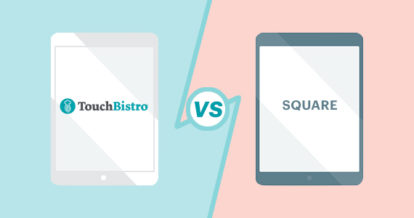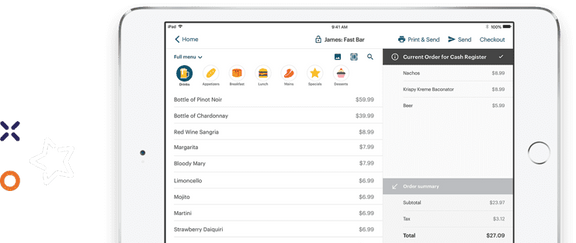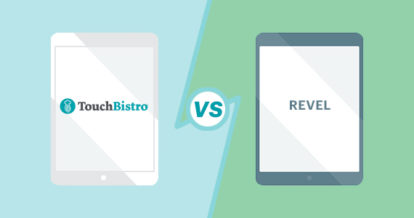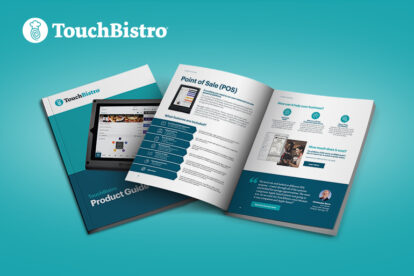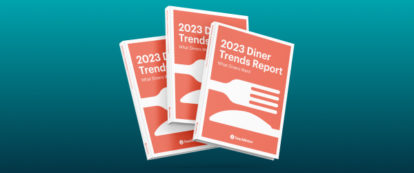| Don’t have time to read the full article? Here are the highlights |
| TouchBistro: – Runs on iOS and Apple iPad tablets – A hybrid system that keeps working even without an Internet connection – Integrated payments with cost-plus pricing and the flexibility to use third-party payment processors – Robust features and extensive in-house solutions, including integrated reservations and online ordering – Best for independent restaurants both big and small Square for Restaurants: – A strictly cloud-based POS system – POS setup includes Apple iPads and proprietary hardware such as the Square Terminal – Affordable monthly software fees, but more basic POS features and add-on solutions – Required to use Square as your payment processor, which comes with high payment processing fees – Best for smaller food service venues such as food trucks and cafes |
Shopping for a new restaurant POS system can feel pretty overwhelming – especially when you’re trying to compare TouchBistro vs Square for Restaurants. Both are popular POS solutions designed specifically for the needs of today’s restaurants, cafes, and other food service venues.
But while TouchBistro and Square may seem similar upon first glance, there are some important differences between the two. Square for Restaurants was designed as an extension of the company’s payments terminal and retail services, while TouchBistro was specifically built by restaurant people, for restaurant people. As a result, each POS system has its own strengths and weaknesses, making each one better suited to a very different type of restaurant.
The tricky part is figuring out which system is right for your restaurant and that’s where this guide can help. We’ve compiled everything you need to know about TouchBistro and Square, and pitted them against one another in an in-depth, head-to-head comparison. This restaurant POS system comparison of TouchBistro vs Square includes:
- The foundations of each system
- Core POS features
- Hardware
- Payments
- Other add-on solutions
- Pricing
- Integration partners
- Customer support
At the end of the day, no restaurant POS system is one-size-fits-all. But with the information in this guide and our Ultimate Guide to the Best Restaurant POS Systems, you can figure out which one is the best fit for your particular business.
The information contained on this site is accurate as of the time of publication.
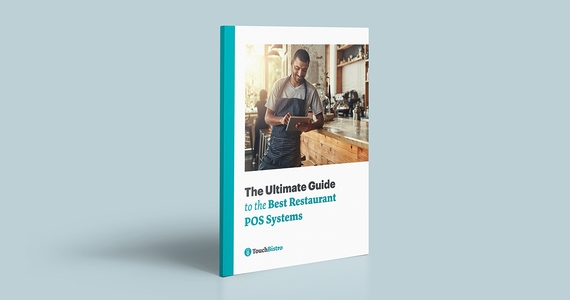
Compare the top restaurant POS systems on features, pricing, payments, and more.
TouchBistro vs Square for Restaurants: An Overview
On the surface, TouchBistro and Square for Restaurants are very similar products. Both systems are affordable POS solutions that have been created for restaurants and other food service establishments.
But when you dig a little deeper, there are some major differences between these popular restaurant POS systems. Below, we’ll provide an overview of TouchBistro vs Square, including the similarities between the two systems, how they differ, and what all this means for you as a restaurateur.
| TouchBistro | Square for Restaurants | |
| POS System | Hybrid cloud and POS-based | Cloud-based |
| Operating System | iOS | iOS |
| Regional Availability | CAD, U.S., MX, U.K., and more | CAD, U.S., Ireland, and Spain |
| Hardware (Tablets) | iPads | iPads |
1. POS System
When you compare TouchBistro vs Square head-to-head, one of the starkest differences is the type of POS system.
Square for Restaurants is a cloud-based system, which means that your data is stored in the cloud on Square’s remote servers. With this type of system, you can run and access all your POS features remotely over the Internet anytime, from anywhere. This is a major plus for restaurants because it gives staff and managers the freedom to move around the restaurant and access information while off-site.
However, the downside of a cloud-based system is that your POS system is almost entirely dependent on your Internet connection. This means that if your WiFi goes down, your POS terminals will be unable to talk to one another and you won’t be able to carry out key functions such as sending orders to the kitchen. This can be a big headache for any restaurant and should be a major consideration if your venue has a slow or unreliable Internet connection.
Unlike Square, TouchBistro is a hybrid POS system. This means that you enjoy the same convenience and remote capabilities of a fully cloud-based POS, but there is also a hardwired, local connection that acts as a backup when the Internet goes down. The benefit to a hybrid system is the peace of mind that your POS system (and all the functions it supports) will stay up and running even if you lose your WiFi connection. For restaurants with a high volume of customers, this kind of reliable POS system is a must-have.
2. Operating System
Though TouchBistro and Square may differ when it comes to the type of POS, they both run on the same operating system.
Both systems run on Apple’s iOS operating system, which means they also use Apple hardware. iOS is generally considered a more reliable and user-friendly operating system than Android because Apple owns both the hardware (the iPad) and the software (iOS). This allows for a seamless integration between the POS software and tablets, and automatic updates across devices.

3. Regional Availability
Beyond the technical aspects of each system, it’s also important to address the regional availability of each system.
Though Square is available in many different countries, Square for Restaurants is only available in the U.S., Canada, Ireland, and Spain.
In contrast, TouchBistro’s POS system is available in the U.S., Canada, Mexico, the U.K., and beyond. TouchBistro is also configured to meet the unique needs of restaurants in each country so you can access region-specific features and integrations. For instance, customers in the U.K. can use TouchBistro Payments powered by Barclaycard, one of Britain’s leading payment providers.

Compare the top restaurant POS systems on features, pricing, payments, and more.
Core POS Features
If you’re shopping for a new POS, there are some core features that every restaurant will need. This includes crucial functions such as menu management, floor plan management, reporting, and more.
| Core POS Features | TouchBistro | Square for Restaurants |
| Menu Management | ✔ | ✔ |
| Staff Management | ✔ | ✔ |
| Inventory Management | ✔ | ✔ (only basic stock management capabilities) |
| Floor Plan Management | ✔ | ✔ |
| Tableside Ordering | ✔ | ✔ |
| Reporting | ✔ | ✔ |
| 1:1 Onboarding | ✔ | ✔ |
| Customer Support | 24/7/365 | 24/7 (with Plus plan) |
Both TouchBistro and Square for Restaurants are equipped with similar core POS features, including:
- Menu Management: Tools for building, managing, and optimizing your restaurant menu.
- Staff Management: Manage employees with personalized accounts and track labor costs.
- Inventory Management: Monitor inventory level counts and control stock availability.
- Floor Plan Management: Design your restaurant floor plan, take orders by table, move parties around, split checks, and more.
- Tableside Ordering: Take POS tablets tableside for faster and more accurate order taking.
- Reporting: Real-time and end-of-day reporting on key business metrics such as sales, staff activity, menu items, and more.
While TouchBistro and Square for Restaurants might be equipped with similar functions, Square’s core features and reporting functions are not quite as robust as TouchBistro’s. For instance, Square’s inventory management feature only offers basic stock management capabilities. This means you can perform simple tasks such as tracking inventory counts, but you aren’t able to perform more complex functions like tracking food and ingredient costs, menu engineering, or having servers receive an alert when an item is in short supply.
Square also comes up short when it comes to its reporting and analytics. Square was designed for simplicity, which means its POS reports are on the more basic side. In contrast, TouchBistro offers more than 50 different reports, covering everything from total sales to staff activity. TouchBistro also offers more ways to personalize, customize, and export your reports so you can pull key business insights.
For very small restaurants with a limited inventory and lower volume of orders, Square’s basic POS and reporting functions are more than sufficient. However, restaurants that process a high volume of orders may find that Square for Restaurants lacks some of the important features and reporting functions that they need to run their business – especially if they plan on scaling.
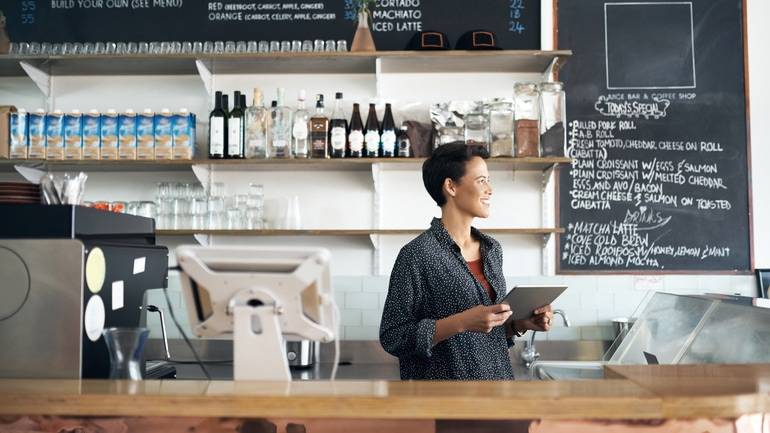
Hardware
Like many of the top restaurant POS systems on the market, both TouchBistro and Square use Apple’s iPad tablets. This means that if you’re switching from another iPad-based POS system, you can continue using the same iPad tablets as long as it’s a compatible generation – a huge cost savings.
Another benefit to iPads is that there’s a seamless integration between the hardware and Apple’s iOS operating system. This integration means that iOS security updates will roll out automatically across all Apple devices so you never have to worry about your software being out of date.
But perhaps most importantly, iPads are some of the most user-friendly tablets on the market. Whether your staff is familiar with Apple devices or not, the products are very intuitive and easy to learn right out of the box – something that can save you a lot of time when setting up your system and training new staff members.
Beyond iPads, both TouchBistro and Square also require additional hardware, such as printers, payment terminals, cash drawers, and more. Square offers this hardware in bundles or as individual purchases, while TouchBistro’s hardware can only be purchased individually.
Though both companies offer high-quality POS hardware, the exact items you need will vary based on the type of restaurant you operate and the volume of customers you serve. As a result, it’s best to contact POS providers directly to determine what additional hardware you need and whether any of what you already have is compatible.

Compare the top restaurant POS systems on features, pricing, payments, and more.
Add-On Solutions
Beyond the core POS features, many restaurants also need additional tools to help them carry out specialized functions such as fulfilling online orders, creating loyalty programs, and booking reservations. Both TouchBistro and Square offer a number of different add-on solutions that help restaurants expand the capabilities of their POS system, including integrated payment processing.
Payments
Integrated payments is one of the most common POS add-ons, and TouchBistro outshines Square when it comes to this particular feature.
| Payments | TouchBistro | Square for Restaurants |
| Payments Pricing Model | Cost plus pricing | Fixed rate pricing |
| Payment Processing Fees | TouchBistro Payments (U.S. only): Interchange + processing fee Integrated Payments for Online Ordering: 2.9% + $0.30 / transaction (CAD) Competitive card-not-present processing fees (U.S.) | Square Payments: 2.6% + $0.10 / transaction (swiped) 3.5% + $0.15 / transaction (key-in) 2.9% + $0.30 / transaction (card-not-present – online ordering) |
| Payment Processing Partners | Square TSYS Worldpay Chase Merchant Services (Canada) Moneris (Canada) Barclaycard (U.K.) | None |
When you sign up for Square for Restaurants, you’re required to use Square as your payment processor. This is an important consideration for restaurants because it means that you don’t have the flexibility to shop around for the best payment processing rates.
Beyond the lack of flexibility, the other important thing to note is that Square is an aggregator. The main drawback of aggregators is that they charge higher payment processing fees because they assume liability for their merchant base. These fees are structured according to a fixed rate pricing model, which means that you pay a fixed rate regardless of card type, processing volume, and other factors. So even if your customers are using low-cost cards like debit cards or credit cards, you pay the same fee per transaction regardless — fees that can quickly add up.
In contrast to Square, TouchBistro offers more flexibility when it comes to payment processing. In the U.S., customers can choose to use TouchBistro Payments, which is an integrated payments solution powered by Chase. Instead of a fixed rate pricing model, TouchBistro Payments is structured according to a cost plus pricing model. Under this model, the restaurant owner pays the non-negotiable interchange fee (for the type of credit card) and a flat mark-up on the interchange.
The benefit to a cost plus pricing model is that you pay a custom rate for every transaction, instead of a flat rate for all transactions. This means that factors such as the type of card a customer pays with, processing volume and risk criteria are taken into consideration, giving you a more competitive rate. As a result, cost plus pricing tends to be the cheaper option for restaurants that process high ticket items or do a lot of processing volume.
Beyond its integrated payments solutions, TouchBistro also gives customers the flexibility to use one of its other payment partners:
- TSYS
- Worldpay
- Chase Paymentech (Canada)
- Moneris (Canada)
- Barclaycard (U.K.)
Depending on the type of restaurant you run and your processing volume, the freedom to shop around for the right payment processing partner can make a significant difference in the amount you spend on credit card fees each month.
Other Add-On Solutions
Though payment processing is one of the most important add-on solutions for restaurant POS systems, many restaurants require additional add-on features.
| Add-On Solutions | TouchBistro | Square for Restaurants |
| Integrated Payments | ✔ (U.S. only) | ✔ |
| Online Ordering | ✔ (CAD and U.S. only) | ✔ |
| Integrated Delivery | ✔ | ✔ |
| Reservations | ✔ | ✘ |
| Gift Cards | ✔ | ✔ |
| Loyalty and Customer Relationship Management | ✔ | ✔ |
| Marketing | ✔ | ✔ |
| Self-Serve Kiosks | ✘ | ✘ |
| Kitchen Display Systems | ✔ (CAD, U.S., and U.K. only) | ✔ |
| Customer Facing Display | ✔ (CAD and U.S. only) | ✔ |
| Digital Menu Board | ✘ | ✘ |
Both TouchBistro and Square for Restaurants offer the following add-on solutions:
- Payments: Integrated or standalone payment processing services.
- Online Ordering: Customers can place orders for takeout or curbside pickup directly from a restaurant’s website and the order is processed through the POS in real-time.
- Delivery: Restaurants can tap into an on-demand network of local drivers for quick and convenient delivery.
- Gift Cards: Branded physical gift cards with multi-location reconciliation.
- CRM and Loyalty: An integrated customer relationships management tool and rewards program.
- Marketing: A marketing solution that helps restaurants create and automate custom marketing campaigns.
- Customer Facing Display: A counter-service system that faces the customer so they can visually confirm their order.
Beyond the add-on solutions listed above, TouchBistro also offers a number of additional in-house add-ons that Square does not. Most importantly, TouchBistro offers an integrated reservations system. TouchBistro Reservations is a complete reservation and guest management platform that allows you to accept and manage mobile and web reservations, create digital waitlists, and communicate with guests via SMS and email. These reservations sync directly to your POS for a seamless flow of information between the front of house and back of house. Restaurants that use TouchBistro Reservations are also automatically listed on the TouchBistro Dine platform, letting them tap into an existing customer network. And while not all restaurants need reservations, it can be a valuable add-on feature for many FSRs.
Of course, not every restaurant needs all of these add-on features. For instance, cafes and very small restaurants may have no need for a complete reservations system. However, if you’re running an FSR or you plan to expand your current operation, the option to add-on these kinds of integrated solutions is a major plus.

Pricing
In any restaurant POS system comparison, pricing is one of the most important factors. The tricky part is knowing what you need upfront so you can factor all costs into the equation.
| Pricing | TouchBistro | Square for Restaurants |
| Software Pricing | Starting at $69 USD / month for a single license Tiered pricing (cost decreases for each additional license) | Free Plan = $0 / month (limited capabilities) Plus Plan = $60 USD per location / month + $40 USD / month for additional terminals Premium Plan = custom pricing |
Square is a bit of an anomaly in the POS space in that it offers a free version of its software with no monthly charges. However, the free version of Square for Restaurants is very limited in its capabilities and you still need to pay for the necessary hardware and Square Payments in order to use the software.
For a more complete restaurant POS, you’ll want Square’s Plus package, which is still a very affordable option for most operators. One device will cost you $60 USD per month per location and comes with all of Square’s core POS features, full reporting, and 24/7 support. For each additional device you need, you’ll pay another $40 per month.
Beyond the core POS features, Square also charges additional monthly fees for any of its add-on solutions, including gift cards, loyalty, online ordering, and advanced team management software. Not to mention, you’ll also have to factor in the cost of Square’s credit card processing fees since Square does not integrate with other payment processors.
On the other hand, TouchBistro’s software starts at $69 per month for a single license. TouchBistro’s pricing is tiered, which means the cost decreases for each additional license you add. While this monthly fee is slightly higher than Square for Restaurants, you also get a lot more. In addition to 24/7 support, all of TouchBistro’s packages include the core POS features, which are more robust and built-out than Square’s.
With TouchBistro you also have to pay for the necessary hardware and any add-on features you wish to use, including payment processing. However, TouchBistro offers more flexibility when it comes to payment processors, which can help restaurants save on credit card processing fees.
Integration Partners
Not every POS system can meet every restaurant’s needs, which is why many POS providers support integrations with third-party partners. These partners offer specialized solutions such as accounting, payroll, marketing, delivery, and more.
| Integration Partners | TouchBistro | Square for Restaurants |
| Online Ordering and Delivery | ✔ | ✔ |
| Reservations | ✘ (in-house solution) | ✔ |
| Customer Relationship Management and Loyalty | ✘ (in-house solution) | ✔ |
| Staff Management, HR, and Payroll | ✔ | ✔ |
| Inventory Management | ✔ | ✔ |
| Accounting | ✔ | ✔ |
| Reporting and Analytics | ✔ | ✔ |
| Ecommerce | ✘ | ✔ |
| Kiosks | ✘ | ✔ |
| Kitchen Display Systems | ✘ (in-house solution) | ✔ |
| Payment Solutions | ✔ | ✔ |
Though TouchBistro and Square may work with different partners, both offer integrations for the following kinds of services:
- Online Ordering and Delivery Marketplaces: Includes both third-party apps such as Postmates, as well as aggregators like Checkmate and Deliverect that sync multiple different third-party ordering apps with your POS system.
- Staff Management, HR, and Payroll: Employee scheduling and labor management tools like 7Shifts and Homebase, and payroll services like Push Operations.
- Accounting: Leading accounting tools such as Quickbooks and middleware software like Shogo.
- Inventory Management: Advanced inventory management tools for both restaurants and bars, such as MarketMan and DigitalPour.
- Reporting and Analytics: Advanced reporting and business insights through software such as Avero and Domo.
In a head-to-head comparison of TouchBistro vs Square, there’s no doubt that Square offers more third-party integrations for restaurants. When customers begin using Square for Restaurants, they gain access to the Square App Marketplace, which includes integrations for some services that TouchBistro doesn’t support, such as eCommerce, hospitality, and CRMs.
Though TouchBistro supports fewer third-party integrations, TouchBistro’s curated list of integration partners is comprised of industry-leading solutions. For instance, TouchBistro supports 7Shifts for team management, MarketMan for inventory, and online ordering aggregators like Deliverect. Though TouchBistro’s list of integration partners is narrower, most restaurants will be able to use their preferred software partners with TouchBistro.
TouchBistro also has its own in-house solutions for many of these services. For instance, TouchBistro offers its own integrated reservations platform, online ordering software, and KDS. In contrast, Square users have to rely on expensive third-party integrations for all of these functions. And unlike in-house solutions, not all of these integrations were created to sync directly with a restaurant POS, which increases the likelihood of errors and bugs.
The option to add additional services on an ad hoc basis can certainly work for some very small restaurants or food trucks that don’t need a full suite of services. However, it presents a challenge for larger restaurants that need many different tools to run their business. For these larger restaurants, trying to integrate Square with a dozen different third-party apps can make things far more complicated and increase the risk of error.

Compare the top restaurant POS systems on features, pricing, payments, and more.
Customer Support
No matter what size restaurant you run, customer support is an important consideration when choosing a new POS system.
While support is limited for Square’s Free plan, the company offers 24/7 technical support with its Plus and Premium plans. However, you do need to call to receive your customer support code before you can speak to a live rep. If you’re facing an emergency situation, this system can be a bit of an inconvenience. But if you’re dealing with a more minor issue, the company does offer email support and a number of online resources to help you troubleshoot problems on your own.
Winner of multiple customer service awards, TouchBistro offers 24/7 technical support and customer service via phone or email, 365 days of the year – regardless of what plan you’re on. This means that restaurants can get answers to any questions they may have, whether it’s in the middle of a lunch service or the middle of the night. TouchBistro customers can also access an extensive online resource library, complete with step-by-step guides and videos that restaurateurs can use to troubleshoot any issues.
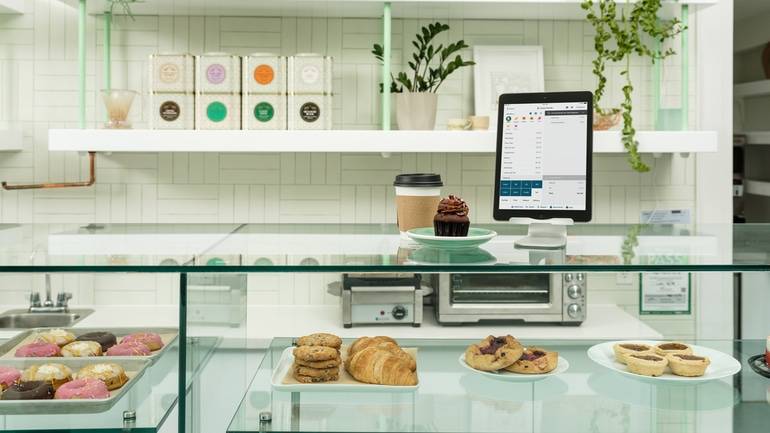
TouchBistro vs Square for Restaurants: The Bottom Line
When you compare TouchBistro vs Square, it’s clear that each platform has its own unique strengths and weaknesses. While both offer similar features, each POS system is best suited to a very different type of restaurant.
For smaller venues, Square for Restaurants is a great option. With Square, it’s easy to get up and running quickly, and the system supports all the basic POS functions you need for a low-volume business. And if you only need one POS terminal and credit card reader, Square is definitely a budget-friendly choice (minus the payment processing fees).
Though Square offers many benefits for small businesses, the company is really a payments provider first, and a POS provider second. To support the needs of high-volume FSRs and QSRs, there are several reasons why a restaurant-specific POS solution like TouchBistro is the better choice:
1. Robust POS Features
TouchBistro was specifically built by restaurant people, for restaurant people. This means that the core POS features are equipped with everything you need to run a restaurant, from the menu management software to the advanced reporting functions. TouchBistro also offers a wide variety of add-on solutions designed to help restaurants as they grow, expand, or even change their business model in the wake of the pandemic.
And while you might not realize it at first, having a POS system that can grow with you is important. Sure, Square for Restaurants can carry out most basic restaurant management functions. However, Square’s restaurant POS system was designed as more of an extension of the company’s payments terminal – not the other way around. With a system like Square, you end up with a more bare-bones POS solution that may not be able to keep up with your growing and changing business.
2. Integrated Reservations
Instead of supporting dozens of different third-party integration, TouchBistro has developed its own in-house solutions for virtually every different function a restaurateur could need. This is especially true when it comes to TouchBistro Reservations, which is an in-house, end-to-end reservations system and guest management platform that integrates seamlessly with your POS.
With online reservations quickly becoming the norm – especially in light of the COVID-19 pandemic – you need a reservation system you can count on. Unlike in-house solutions, not all third-party reservations software is designed to integrate seamlessly with your POS, and you run the risk of losing precious data to bugs and errors. Not to mention, getting hold of a third-party vendor for technical support can be an added complication, which is not something you want to deal with when customers show up expecting a table.
3. Payment Processing
Your payment processor is almost as important as the POS system itself, which is why you want to make sure you choose the right partner. With TouchBistro, you have the option to seamlessly integrate TouchBistro Payments with your POS system. Unlike other payment processors, TouchBistro Payments is priced according to cost plus pricing model so you receive a more equitable rate.
And though they might seem small, credit card processing fees can make up a significant portion of your budget – especially if your average ticket price is high and/or you process a lot of credit card volume. If you use a payment processor like Square that’s structured according to a fixed rate pricing model, you could be paying a lot more than necessary.
While a restaurant POS system comparison can give you better insight into the ins and outs of each system, it’s important to factor in your own business needs – from hardware costs to payment processing partners. With this head-to-head comparison of TouchBistro vs Square for Restaurants, you now have the information you need to make the best decision for your restaurant and your team.
Know someone switching POS systems? Refer them to TouchBistro and get rewarded.
